




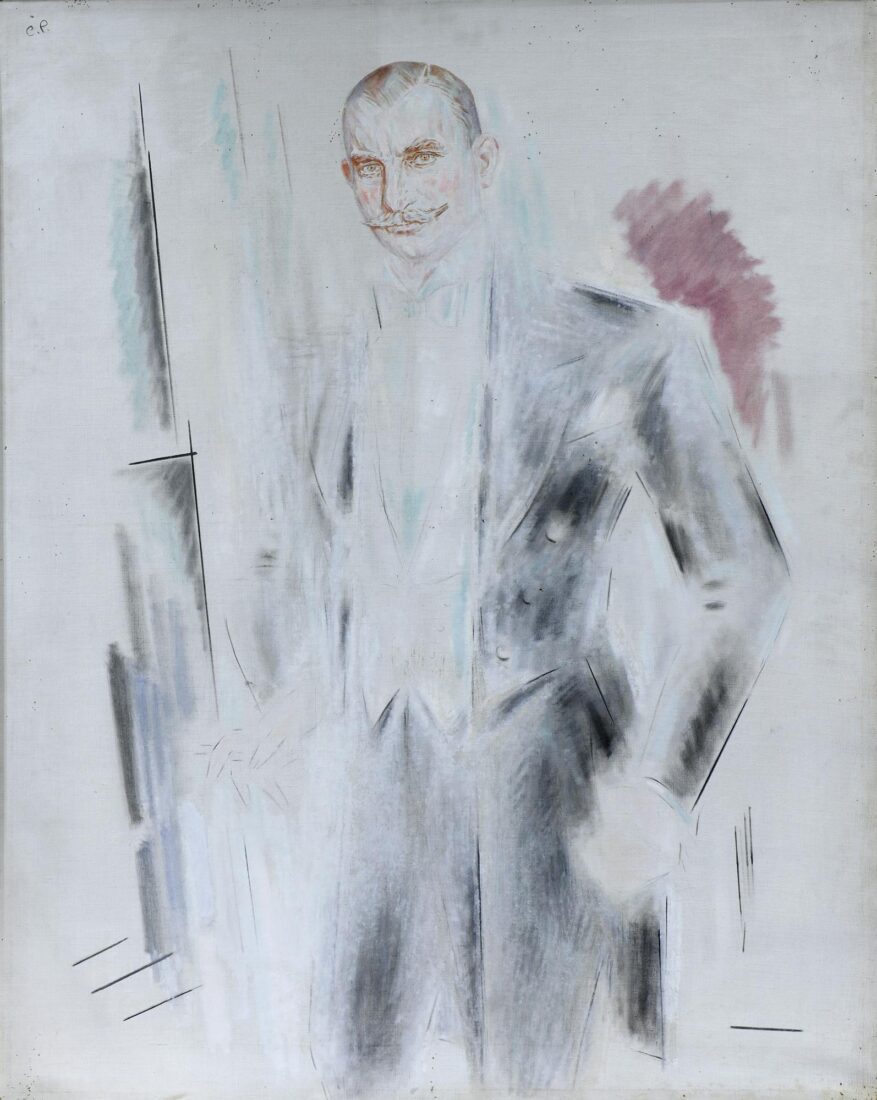

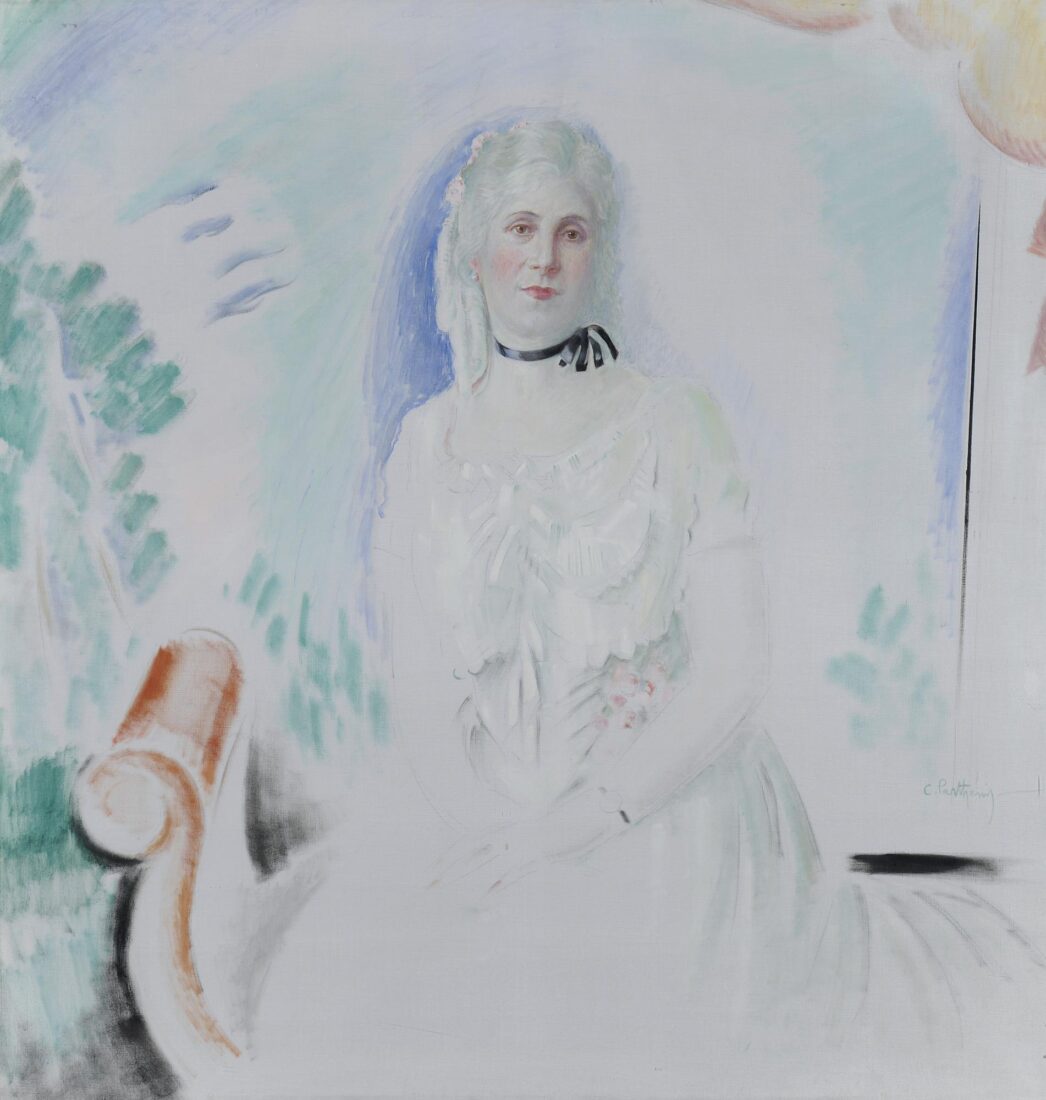







The “Harbour of Kalamata” introduces us to the poetic and lyrical atmosphere of Parthenis’ painting. What can we see in this painting? A quay with benches and a red lighthouse at the end. A ship with open sails painted yellow. A violet mountain in the distance. And a sky with faint clouds, in which we find once again, in softer tones, the colours of the sea and the mountain. The entire work is lightly painted, allowing the spaces between the colour areas to breathe. The harmony of colours is based on the interplay of blue-purple and yellow-orange. In other words, a conversation between cool-warm and complementary colours. The composition is based on the large horizontal line of the sea, the vertical lighthouse and the diagonal quay. The ship with open sails balances the weight of the elements that would otherwise be heavier to the right.
Although the quay has been drawn in perspective, in fact the painting has no depth. This is because there is no atmospheric perspective, as it was called by the old painters. In other words, the more distant objects — the quay further in the distance, the mountains — have not been painted using fainter tones in order to suggest distance. In modern painting, the artist seeks to keep the image within the canvas plane, avoiding the illusion of three-dimensionality.

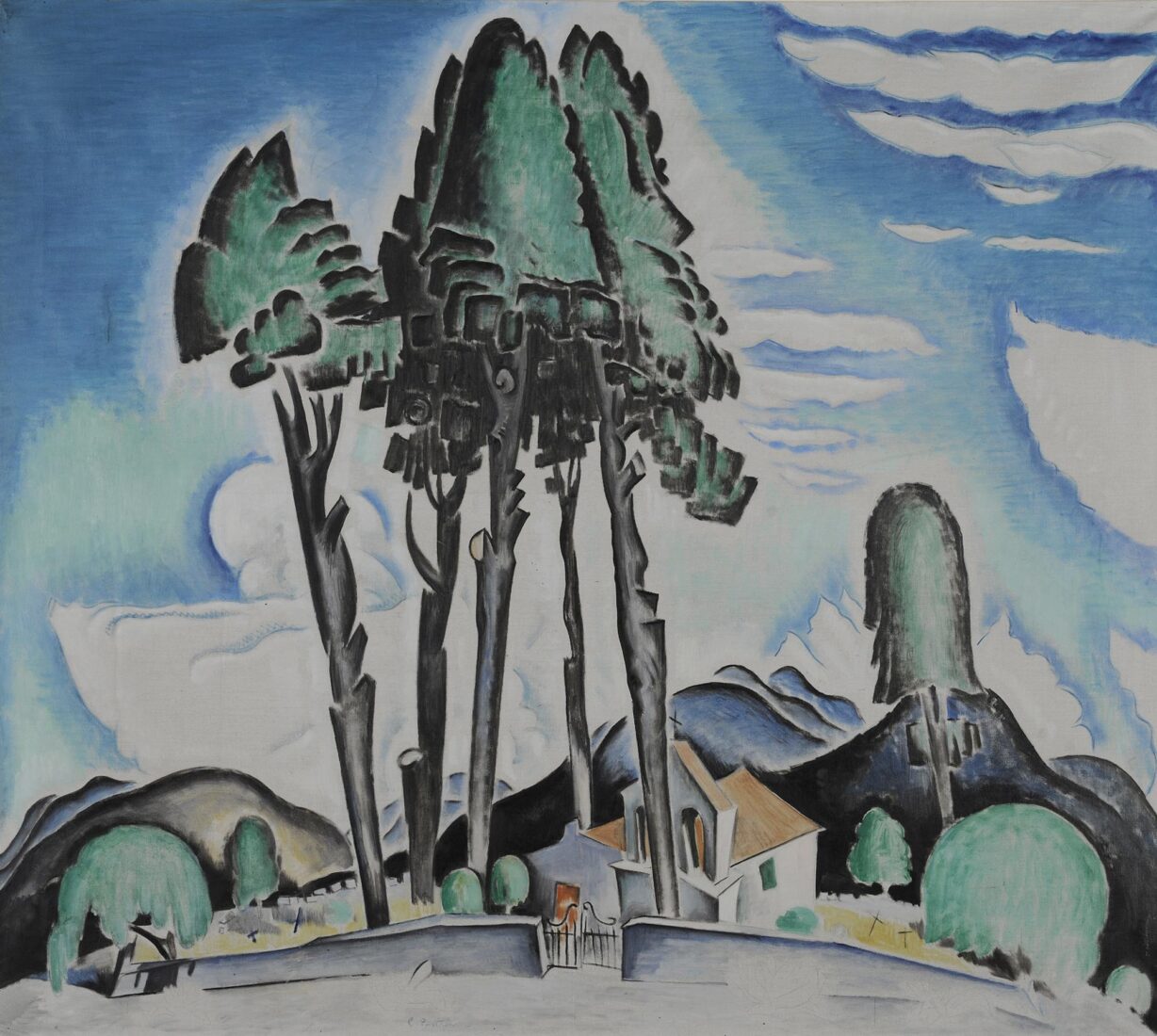
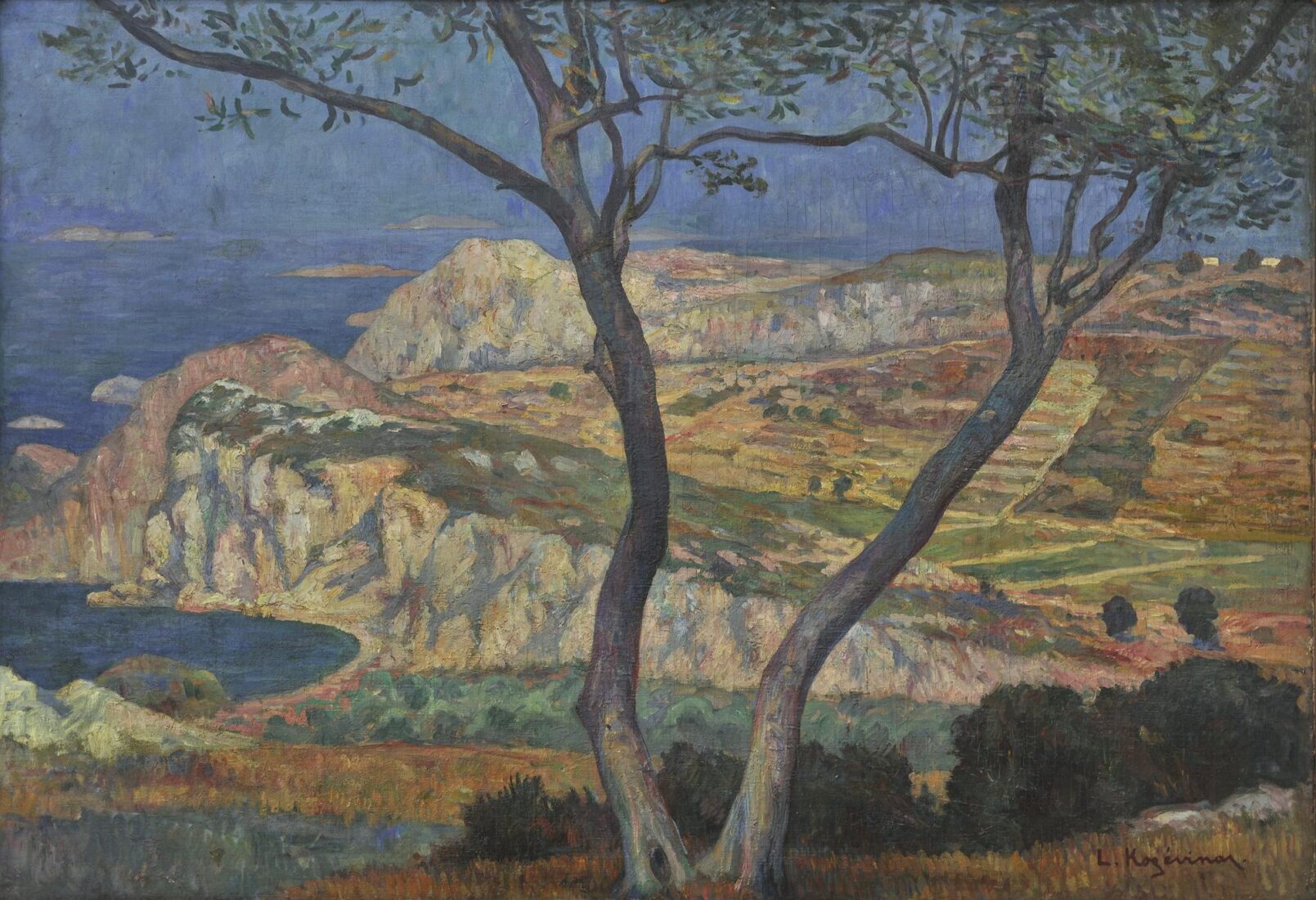

The “”Straw Hat”” is one of the most impressive and daring works of early Greek modernism. Before we even begin to analyse it, our first impression is one of being immersed in an island landscape on a hot summer day. The fiery yellow of the dry wild plants, mingling with the yellow straw of the suntanned girl (for it is a girl), converse with blue and violet, migrating from the young girl’s shirt to the whitewashed courtyard and the low island houses completing the composition at the top. Two complementary colours prevail, yet gradated in various shades and distributed in arrays across the entire composition. All the grey-blue cool colours at the bottom, all the orange-yellow warm ones at the top.
The painter loads the brush with abundant paint and “”builds”” his composition in sweeping brush strokes. It is as if we could follow the artist’s fast and assured pace as well as the direction of his gesture. We can therefore call it an expressionistic, gestural writing. Except for the fact that Nikolaos Lytras conveys a message of tranquility instead of agony, as was the case with expressionist painters. This painting of a closed horizon, an upward composition and bold colours set on fire by the sun, can be seen as the ideogram of the Greek summer on an Aegean island. The island may be Tinos, where the artist’s family originated.

In this composition, too, the artist places the horizon near the top, enclosing it with a series of fishing houses built on the beach. This, naturally, helps the artist keep his composition on the painting plane, avoiding the illusion of perspective. As we have seen in other works, there is another way for artists to achieve the same effect: abolishing the old notion that things are surrounded by an atmosphere, which the old art used to represent as a void. Now, both the sky and the atmosphere are painted in bold colours and perceived as full, so that there are no “”voids”” in the painted surface. This was also the reason why when they painted landscapes, artists avoided the so-called “”atmospheric perspective””.
“”A boat with sail”” is placed diagonally. As it is cut off by the painting frame, the artist makes us feel as if we were also there on the boat, along with the languid fisherman, rowing with just one hand, who seems to be looking at us, even though his face is roughly sketched. The sea is articulated using thick paint and flowing brushwork, which gives it physical substance. Blue, violet and ochre prevail.


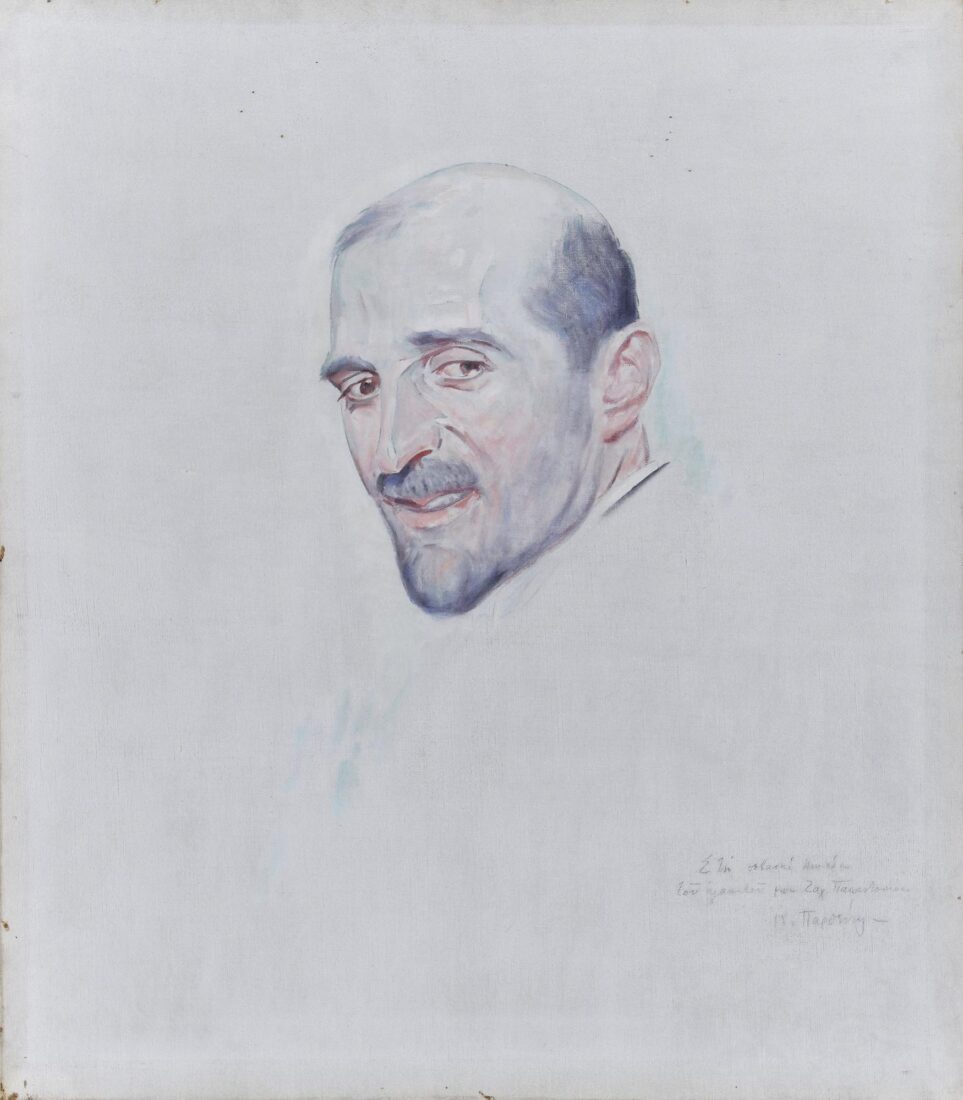


The painter has placed his easel at an elevated position in order to paint the beautiful white Cycladic chapel, surrounded by humble island houses. In the foreground, according to his habit, Maleas has placed wide house terraces in order to lead the viewer’s eye to explore the background. A winding courtyard wall is our “cue,” leading the eye to the deep blue sea and the island of Kameni with its dormant volcano. The horizon is placed near the top, allowing for a mere strip of turquoise sky, in which float white, stylised clouds with golden linings. Along blue and white, other prevailing colours are brown, chestnut and grey. The shades are purple and blue, according to the Impressionist* principles, which were subsequently confirmed by colour photography. Contrary to Thermo, in which horizontal lines prevail, here is a large diagonal and curvilinear patterns.

